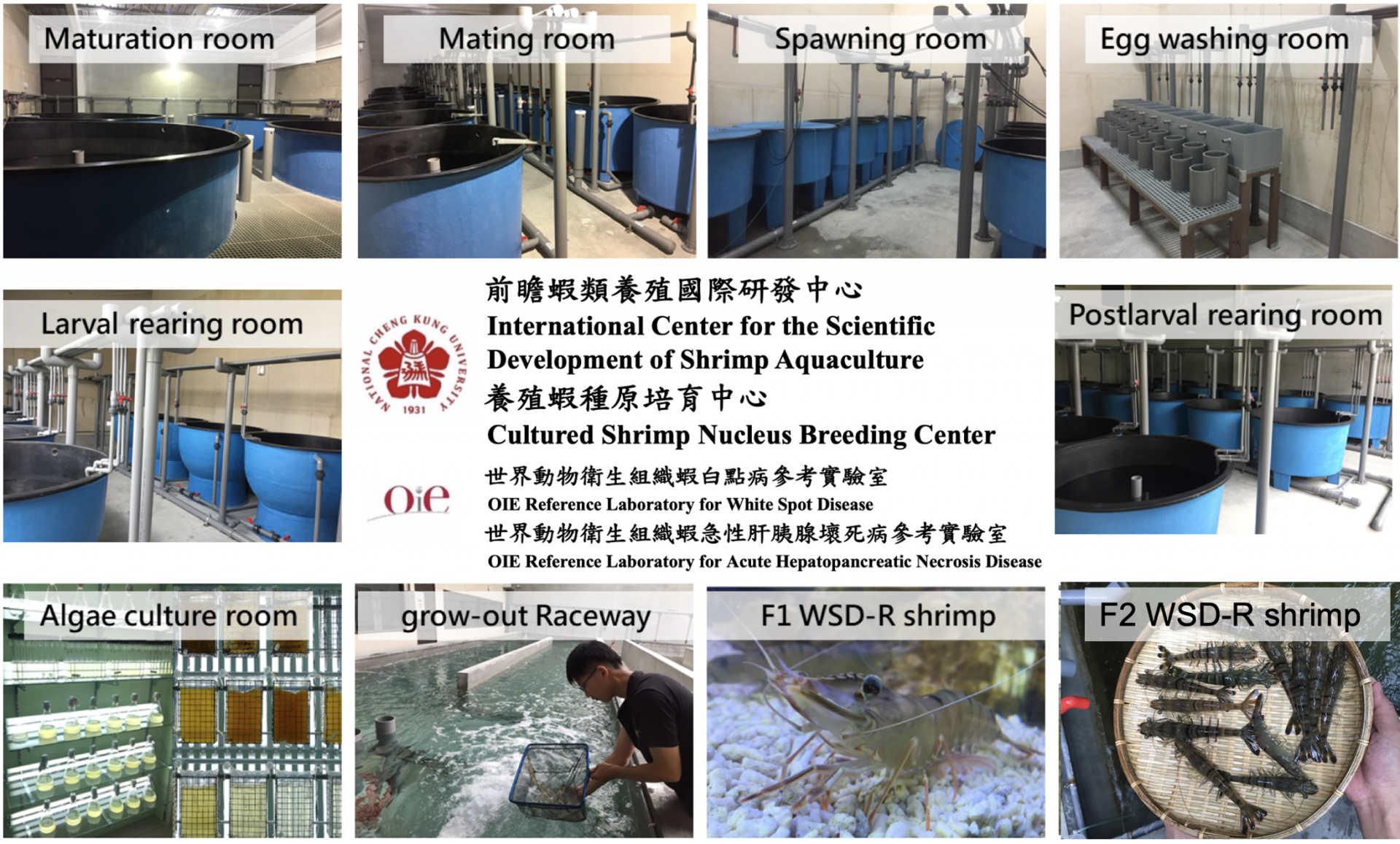International Center for the Scientific Development of Shrimp Aquaculture (ICDSA)
International Center for the Scientific Development of Shrimp Aquaculture (ICDSA)
Ching-Chang Le
Research Center
International Center for the Scientific Development of Shrimp Aquaculture (ICDSA)
An-Nan Campus
International Center for the Scientific Development of Shrimp Aquaculture (ICDSA)
I-Hua Chen
ihua@mail.ncku.edu.tw
06-2757575 ext.58209
To achieve our mission of a sustainable P. monodon aquaculture industry, the Center focuses on: (1) improvement of SPF P monodon stocks; (2) development of smart farming technology; (3) promotion of aquatic animal health through a collaborative global framework. We aim to produce high-impact scientific publications and presentations while providing a unique environment for farmers and students to learn intelligent farming technology.
Key results for 2021 were:
(1) At the NBC, we maintained more than 20 SPF P. monodon families, some of which showed commercially favorable traits including tolerance to low levels of dissolved oxygen (eg. DG12F), tolerance to low temperature (eg. DG27, DG29), and fast growth (eg. DG12, DG34 ). Four hybrid families (DG12 x DG29, DG34 x DG62, DG96 x DG29, DG27 x DG12) were subsequently transferred to the farm in Hualien, mainly for mass production of broodstock for commercial use.
(2) This year in Hualien, we completed the design and installation of the circulation system components for our 450 tonne shrimp farming pond, including elements for flow generation, air supply, and water purification. These components improved the suitability of our culture environment for the growth of black tiger shrimp.
(3) In Hualien, the Center’s scientific shrimp culture technology included the use of probiotics in feed (Bacillus pumilus D5, Leuconostoc mesenteroides B4) and in water (photobacteria, 5 species of Bacillus) to promote shrimp growth. In October, we provided 30 female broodstocks (each weighing > 100g) and 30 1-year-old males to a private hatchery recommended by three shrimp culture farm owners for commercial postlarvae production. Around one million postlarvae have been produced so far, and these have been sent to 7 farms for field testing. We have also produced shrimp (> 60g) to high food safety standards for human consumption.
(4) Both junior and senior ICSDSA scientists achieved international recognition. Prof. Chu-Fang Lo was recognized as one of the ‘World’s Top 2% Scientists 2020’ in the field of fisheries for both career-long (1960–2020) and single-year (2020) impact.






 Sweepstake
Sweepstake